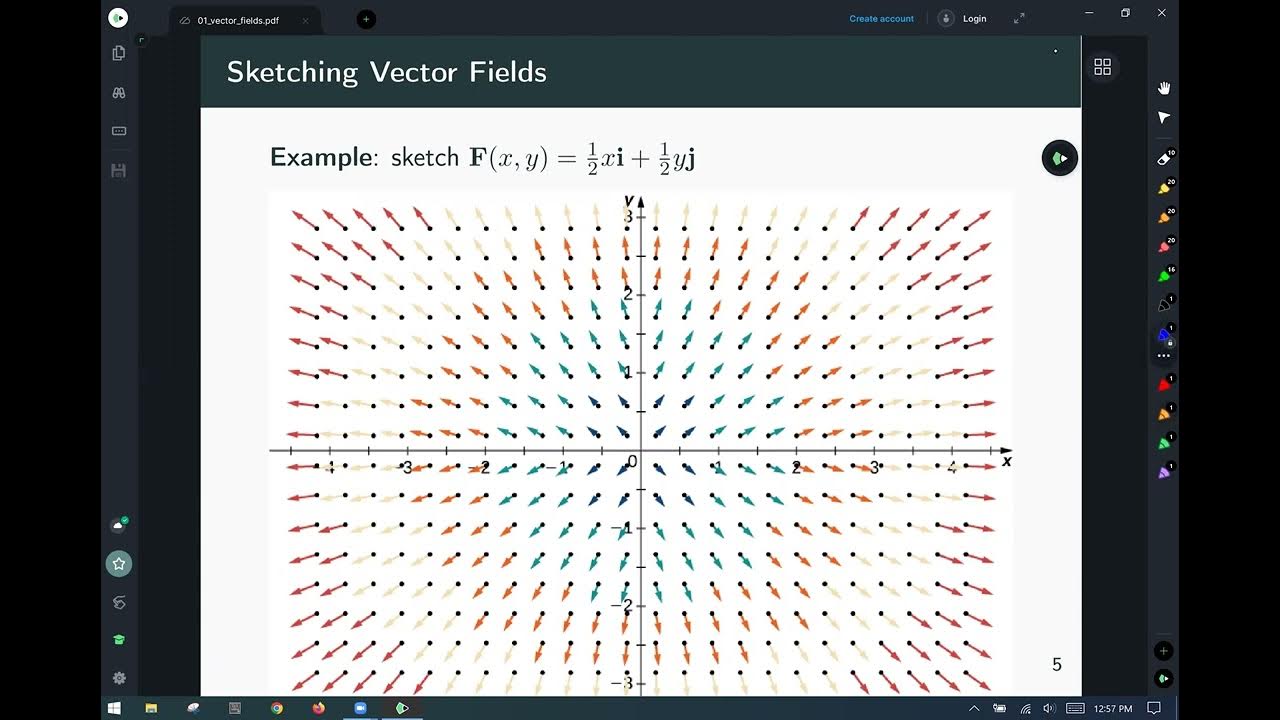1]Vector in Plane and Space - Vector Analysis - Engineering Mathematics
Summary
TLDRIn this educational video, Suprabha introduces the concept of vector analysis, focusing on vectors in both plane and space. She explains the significance of vectors across various fields, including physics and engineering, and differentiates between scalars and vectors. The video covers essential topics like vector components, unit vectors, and vector addition, providing clear definitions and formulas. Suprabha also illustrates how to represent vectors geometrically and emphasizes their applications in real-world scenarios. Viewers are encouraged to engage by leaving comments and subscribing for more content.
Takeaways
- 😀 Vectors are quantities with both magnitude and direction, crucial in various fields like physics and engineering.
- 📏 Scalars only have magnitude, while vectors have both magnitude and direction.
- ➡️ A vector's origin (starting point) and terminal point (ending point) determine its direction.
- 🧭 Vectors can be represented graphically using coordinate axes, breaking them into components along those axes.
- ➕ Vectors can be expressed as a sum of their components: R = A + B.
- 🔢 Unit vectors (e.g., î, ĵ, k̂) represent direction with a magnitude of one.
- 📐 The magnitude of a vector can be calculated using the formula |B| = √(B_x² + B_y² + B_z²).
- 🌌 In three-dimensional space, vectors are represented using three axes: x, y, and z.
- 📝 Understanding the basics of vectors is essential for further studies in vector analysis.
- 🔔 Viewers are encouraged to engage with the content by commenting, liking, sharing, and subscribing.
Q & A
What is a vector?
-A vector is a mathematical quantity that has both magnitude and direction, used to represent physical quantities such as force and velocity.
How do scalars differ from vectors?
-Scalars are quantities that have only magnitude (e.g., temperature, mass), while vectors have both magnitude and direction (e.g., displacement, velocity).
What are unit vectors?
-Unit vectors are vectors with a magnitude of one, used to indicate direction. They are represented with a hat symbol (e.g., î, ĵ, k̂ for the x, y, and z axes respectively).
Why are vectors important in physics?
-Vectors are essential in physics because they allow for the representation of forces and other quantities that depend on direction, aiding in the analysis of motion and interactions.
How can you find the resultant vector from two vectors?
-The resultant vector can be found by adding the components of the two vectors along each axis (x, y, z), using vector addition formulas.
What is the significance of the origin in vector representation?
-The origin serves as the starting point for vectors, allowing for the representation of their position in a coordinate system.
What does the term 'terminal point' refer to in vector analysis?
-The terminal point is the endpoint of a vector that represents its direction and magnitude from the origin to a specific location.
How do you calculate the magnitude of a vector?
-The magnitude of a vector can be calculated using the Pythagorean theorem, taking the square root of the sum of the squares of its components.
Can vectors exist in three-dimensional space?
-Yes, vectors can exist in three-dimensional space, represented by three coordinates (x, y, z), and can be analyzed similarly to two-dimensional vectors.
What practical applications do vectors have?
-Vectors have numerous applications in fields such as physics (e.g., analyzing forces), engineering (e.g., structural analysis), and computer graphics (e.g., animations).
Outlines

This section is available to paid users only. Please upgrade to access this part.
Upgrade NowMindmap

This section is available to paid users only. Please upgrade to access this part.
Upgrade NowKeywords

This section is available to paid users only. Please upgrade to access this part.
Upgrade NowHighlights

This section is available to paid users only. Please upgrade to access this part.
Upgrade NowTranscripts

This section is available to paid users only. Please upgrade to access this part.
Upgrade Now5.0 / 5 (0 votes)





